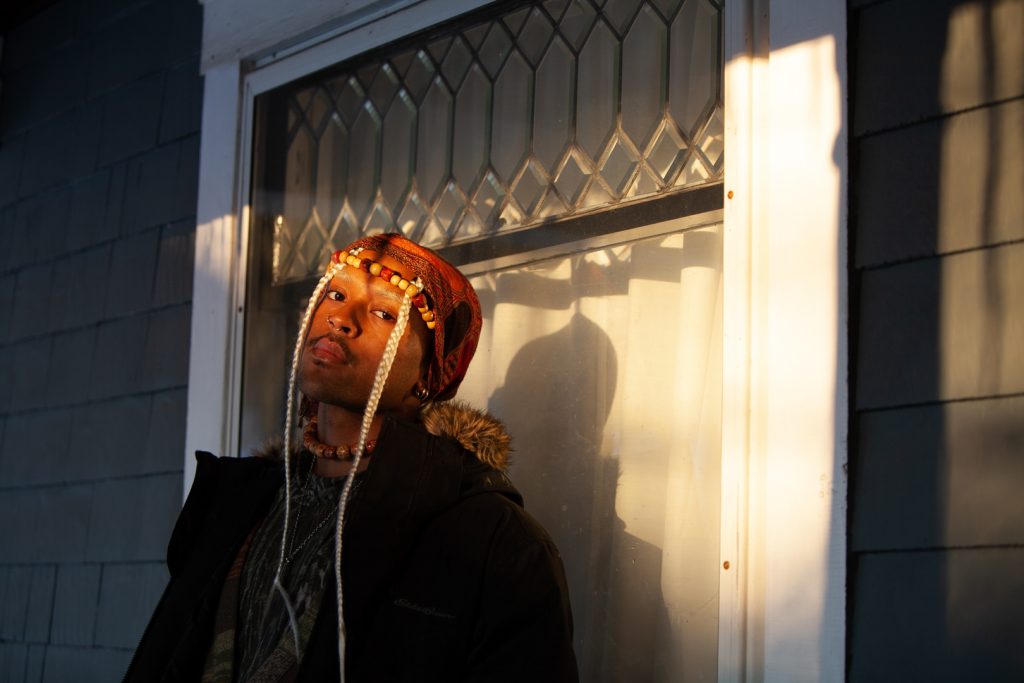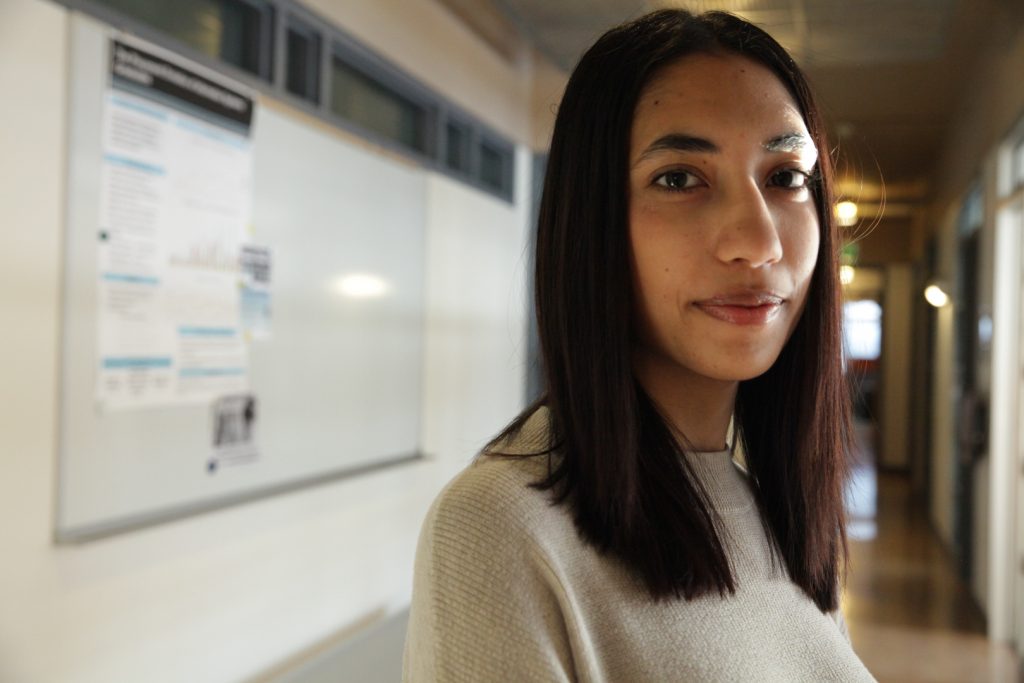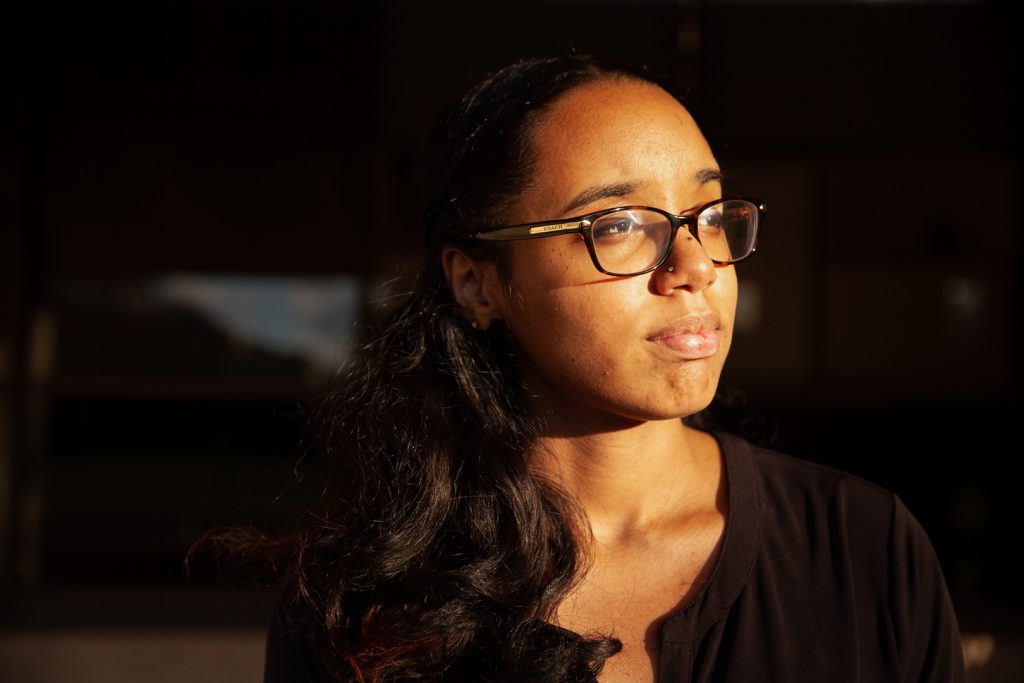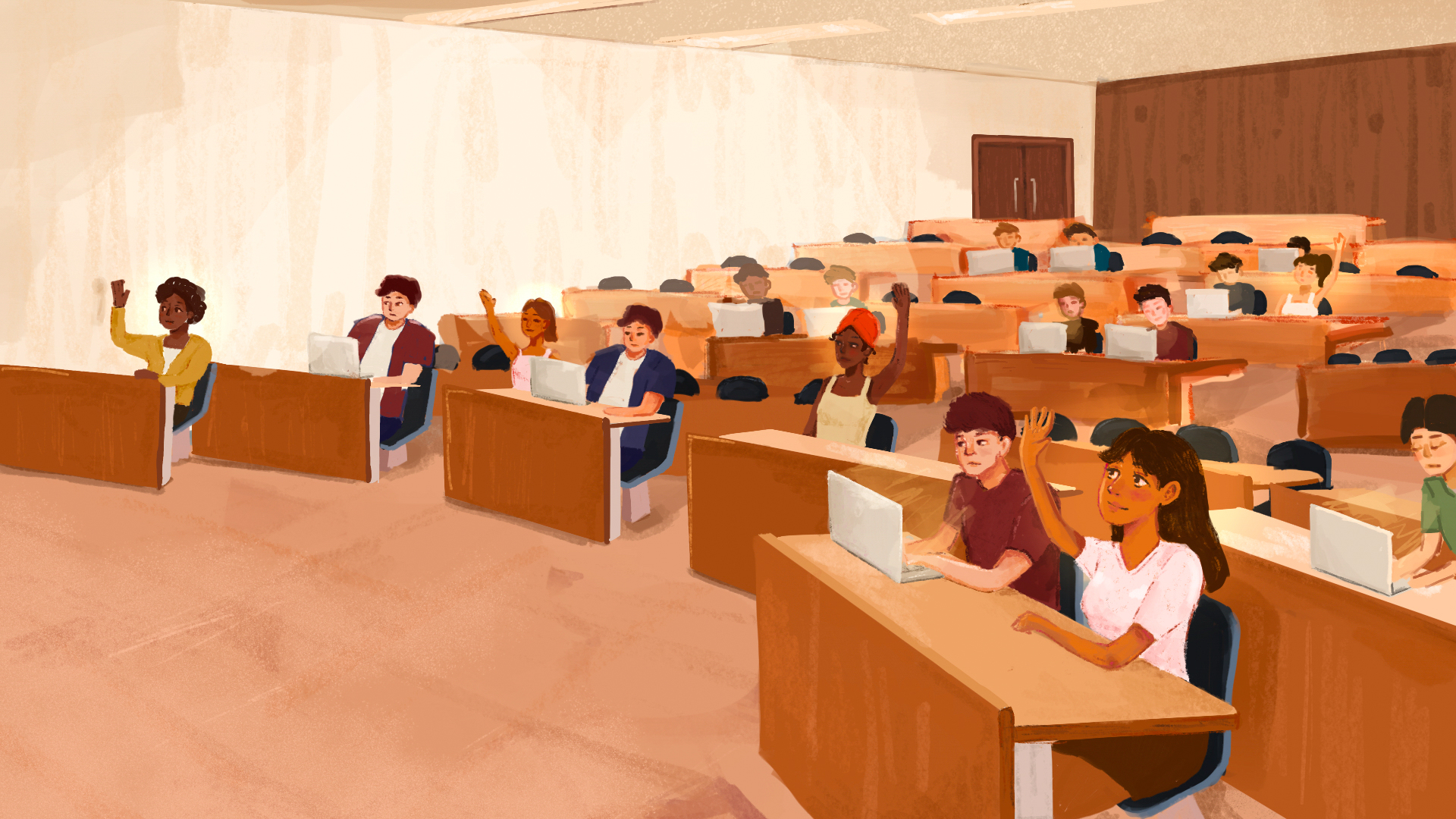Beyond the Gender Equity Numbers
Beyond the Equity Numbers
Students from diverse gender identities share their experience with gender at Syracuse University, showcasing if it reflects statistics surrounding the institute’s inclusivity and national collegiate demographics.
Before 1972, women’s experiences in college could be uneven from a lack of resources and opportunities to a not-always-equal treatment among their professors and peers.
But when President Richard Nixon officially signed Title IX prohibiting discrimination based on sex in federally funded programs and activities, the law started to transform higher education realm, making it more gender-inclusive.
Title IX’s impact influenced women’s overall place in society by not only prohibiting sex discrimination but also impacting workplace opportunities, addressing issues such as sexual harassment and influencing the overall makeup of higher education.
At Syracuse University, 53% of 2021’s first-year class are female students — a level that has remained consistent in recent years.
But a look at specific SU college in traditionally male-dominated fields show there are still significant gender discrepancies between majors and programs such as in the Whitman School of Management with a gender difference of 45% women and 55% men.
Nationally, women make up less than 25% of degrees earned in engineering and other STEM-related fields, according to the National Survey of College Graduates (NSCG) (2019).
Enrollment figures are only one way of measuring gender equality on college campuses. The perspectives of students with a range of identities sheds light on their journeys with gender at SU, showcasing how, or if, the data aligns with their experiences.
The Gender Difference
In 2019, the number of degrees awarded reflected a male-dominated STEM field while more women earned performing arts, communications and public administration degrees.
Jessica Anand
The biggest gender discrepancy Jessica Anand, who uses they/them/theirs pronouns, has faced in architecture has been with their professors. Because many of the professors in the architecture program are male, they feel occasionally passed over for various opportunities or that favoritism benefits male students in their class.
“There’s not a lot of connection points,” Anand said. “It’s harder as a woman to connecting with your professors.”
Anand said their perception is a better gender balance among the student population based on what she sees in her classes.
“I haven’t noticed too much of a difference mainly because I feel like our year is pretty evenly split between men and women,” they said. “But it is also like one of the only years that are like that.”
The biggest gender inequality Anand has observed isn’t within SU’s program, but rather the field of architecture itself.
“I’ve had a couple friends, who an awful lot of times have had better portfolios or better resumes but have been turned down … for another candidate who was male,” they said.
Anand said the architecture industry is generally stuck in the past. Rather than enforcing negative stereotypes about women, they have observed primarily positive stereotypes about men.
They said while the program is moving to address social issues, there are not always clear efforts to help female students. Because of this “invisible kind of support,” Anand said they rather rely on people and professors who seem to be more “open” and “willing to talk about things.”
Women at Whitman
Whitman School of Management had significantly smaller percentage of female undergraduate compared to the Syracuse University’s full undergraduate population in Fall 2021.
Anaka Negin
A senior in SU’s Martin J. Whitman School of Management, Anaka Negin has tried her best to distance herself from her home college because of the college’s competitive culture and slant toward a male perspective.
“There still feels like there’s such a presence of just male domination and thought,” Negain said. “It’s just this very, almost secular view of what’s out there that I feel like is very catered towards those men.”
Whitman’s gender ratio for first-year students was 45% female to 55% male as off fall 2021 – the exact opposite of the 55% female undergraduate enrollment university wide.
In a global management course, Negin remembers a professor asking the class if there is equal opportunity for anyone to run for President of the United States. One male classmate responded by calling out every president’s differences, suggesting anyone could become our country’s leader.
While she was reluctant to raise the issue in class, Negin pointed out that nearly all Presidents who were ultimately elected have been white man.
“All of these men not being able to identify that there is an issue sort of highlights how … if the system isn’t inconveniencing them at all, there isn’t a problem and there’s no need for change,” she said.
As she has progressed through her marketing and supply chain major, Negin said there’s been a more even split between men and women in her classes and sometimes even more women.
This reflects the broader gender trend nationally with women making up 51% of business, management, marketing and related support services degrees in 2019, per NSCG.
Negin said marketing often has the assumption of being more creative and feminine, whereas other majors, like finance and accounting, are associated with more masculine stereotypes.
She credited one professor, who was a white male, with including the gender binary as part of a class discussion about how to best market to males vs. females.
“I wish we could have more conversations like that about sort of the stereotypes, breaking those down and how we can influence that within marketing,” she said. “The fact that he even acknowledged that there are more than two genders, is something I really just didn’t expect to hear in Whitman at all.”
While Negin recognizes that the school holds speakers and other events about gender equality, she suggested they be required so that more students attend.
“It’s so ingrained in us at this point that so many more conversations need to happen,” she said, adding that for change to occur within Whitman, and the university as a whole, “people need to admit there’s a problem” and “be actively looking for solutions.”

Ares Taylor
Ares Taylor, who currently identifies as nonbinary trans fem, is a communications design senior in the College of Visual and Performing Arts and still working on finding themselves.
Within VPA they have been met with both support and misunderstandings. When they changed their name during the pandemic, one of their forme professors made a point to change their name on the Google Drive where they submit work.
“Even just for me to submit my name or submit my work and feel comfortable taking the right name, that was nice,” Taylor said. “I wasn’t expecting it.”
However, they are also conflicted dealing with professors misgendering them or being unwilling to have their perceptions challenged.
“In the classroom setting where I have that thought of do I want to correct this professor for when they call me ‘mister’ or they use ‘he’,” Taylor said. “That’s a little thing.”
More of Taylor’s frustration, however, comes from moments outside the classroom. Taylor recalled an incident at a Marshall Street bar when they were denied entry into the women’s restroom.
“The security guard grabbed me, and he was yelling at me, ‘You can’t be in there!’” Taylor said. “His response to me was like, ‘well, that’s not my job to know how you identify. It’s to make other people feel safe.’ And I’m sitting here like, ‘I don’t feel safe.’”
In the fall, Taylor took an African American Studies class about race, class, and gender during which they discuss the idea of “disclosure” – the sense of always having to disclose your identity to others to alter their perception of you.
“You’re constantly being raised to see yourself through the eyes of whoever is oppressing you,” they said, “So you’re honestly looking at yourself, but not even seeing yourself as yourself.”
“I’m looking at myself not even wanting to be myself.”
Taylor said they are exhausted by being constantly caught up in other people’s perceptions of them.
“I just want to live. I just want to breathe happily.”

Mona Pudasaini
The concept of women studying and working in STEM was not emphasized to Mona Pudasaini during high school. Yet, transferring into the iSchool from the College of Arts and Sciences during her first year at SU, she has found herself immersed in STEM.
“I was nervous that it was primarily going to be a major surrounded by men, and then I wouldn’t have a voice heard within the iSchool community,” Pudasaini said.
The information management and technology junior with a concentration in data analytics said she has found that not be the case as she feels surrounded by strong female role models and a close, personal community of STEM students who support one another.
Pudasaini said she has noticed an increase in female enrollment within her classes and that professors and advisors are eager to address gender disparities and work to present equal opportunities to all students.
Pudasaini and her female classmates are very much a minority in this area of STEM. In 2019, the number of degrees awarded nationally to females in computer and information sciences and support services was 24%, compared to males receiving 76%.
She said she has faced the pressures of adhering to female stereotypes her whole life, but the iSchool community encouraged her to get involved and pursue roles she never expected prior to college.
Pudasaini is the first female president of Kappa Theta Pi, since SU’s professional technology co-ed fraternity’s initial year 2017 when it was led by a female iSchool student Mackenzie Corcoran. Although nervous about being taken seriously as a woman in power, Pudasaini said her brotherhood has made her feel “super at home.”
While working at SU’s Information Technology Services, Pudasiani said she has observed people, consciously or subconsciously, passing over her to seek assistance from her male colleagues in the room. Rather than adhere to people’s biases around women in STEM, Pudasaini goes out of her way to work with these people to try to show what a woman can do and what a woman can say.
“I try to look at every situation, even if it’s bad, as like a learning opportunity for me or that person,” she said.
Pudasiani values the supportive and inclusive community her professors and advisors provide all students, especially women. During the rest of her time at SU, she hopes to take part in maintaining the iSchool’s gender-inclusive environment.
“It’s definitely changed my perspective about what I want to do post-graduation,” she said. “I want to continue working in fields that are around science and technology because I’ve felt way more accepted now than I ever have.”
Significant gender gap
For every 1,000 men who earned a computer and information sciences degrees nationally in 2019, only 317 women earned the same degree.
Erina Uddin
Gender and race intersect within everyone’s identities and experiences. Policy studies and public relations sophomore Erina Uddin has experienced this firsthand.
Uddin works at a boba tea shop on Marshall Street. Customers filter in and out, but when answering people’s questions, some make it a point to turn to her male coworkers to ask the same question and confirm her response was correct.
“Even though it was the same answer, the fact that it came from him, instead of me, gave more authority or more approval for them,” Uddin said.
Taking a College of Arts and Sciences elective last year, Uddin said her professor pinned many racial and gender stereotypes onto her, reinforcing a lot of “racial bias we didn’t anticipate” in Uddin’s first year. Throughout the semester, Uddin actively ignored the professor’s racist and sexist language and actions.
“I guess the good outweighs the bad,” Uddin said. “I don’t expect this one instance to stop me from anything because this is just going to happen regardless of where I go.”
Uddin said that outside of classes, strangers will say racist things on the street or at work. In one instance a person asked her where she was from while she was working, and when she replied, “Brooklyn,” the person responded with racially stereotypical comments.
In the fall semester, Uddin’s Maxwell and Newhouse classes were all taught by male professors. Despite her experience last year, her male professors in both colleges encourage a diverse dialogue and seek new perspectives within class discussions.
In comparing her two home colleges, Uddin says she speaks and engages more in class discussions in her Newhouse where classes are more female-dominated and smaller in size. In her large Maxwell lectures, Uddin said there is more of a chance of not having her voice heard.
In some of her classes, Uddin has been caught in a double bind. She feels the pressure to be as assertive as her male counterparts, yet when she tries to be, there is a negative stereotype associated with her action.
“It’s just a natural phenomenon that every woman has to go through,” Uddin said. “[Women] have to understand the social circumstances of what environment they’re in and change themselves to behave in that social environment, but the fact that I have to do that in the first place is kind of insane.”
Despite these occurrences, Uddin is optimistic for the future, knowing that there are increasingly more equal opportunities for women of color in stereotypically masculine career paths.
“I feel more inclined to pursue male-dominated fields knowing that there’s an opportunity for us,” she said. “It’s becoming easier since the glass ceiling isn’t as hard to break.”

Dynasty Chance
Dynasty Chance likely never imagined dropping her laptop would set her on the path to becoming a computer engineer.
On a high school field trip, Chance had the misfortune of her computer hitting the ground and busting the power key. Once back home she popped open the laptop and was able to fix it by simply adding a piece of styrofoam.
“Oh, well if I can fix it just by doing little things like this, can I actually like work with computers?” Chance recalled thinking to herself.
Chance is now one of the only two computer engineering women in her year at SU. She said that while she hasn’t faced blatant discrimination based on her gender, she sometimes has to take extra steps because she is female.
Gender gap in computer sciences
The ratio of female students earning computer science and information degrees out of the total number of degrees each year increased by about 2% from 2014 to 2019.
“There was this whole idea that I have to prove myself to them before they’ll treat me as an equal,” she said.
During spring 2021 as the COVID-19 pandemic persisted, the other woman in the program took all of her classes online, making Chance the only woman present – sometimes awkwardly – in many of her in-person classes.
“I can’t really relate to the boys the way they relate to each other,” she said.
Because of her gender, Chance said she has to be mindful when speaking in class at times.
“I don’t want to come off too assertive because sometimes they’ll take that as bossy even though most men if they’re assertive, they’re just considered assertive,” she said.
Chance appreciates small moments of recognition like when a professor calls on her first during a group presentation or she’s able to assist others during lab sessions.
“Having them come to me for help was always nice. It just makes me feel like OK, I’m needed and I’m good at giving advice.”
is a newspaper and online journalism senior at Syracuse University.
is a senior, magazine journalism and writing and rhetoric major and a digital producer for The NewsHouse.
is a photography major and contributor for The NewsHouse who strives to tell the story of human resilience through photography and videography.
About
This Project Our StaffExplore
Equal Shot Enforcing Equity No ExceptionsThe S.I. Newhouse School of
Public Communications
215 University Place
Syracuse, NY 13244


